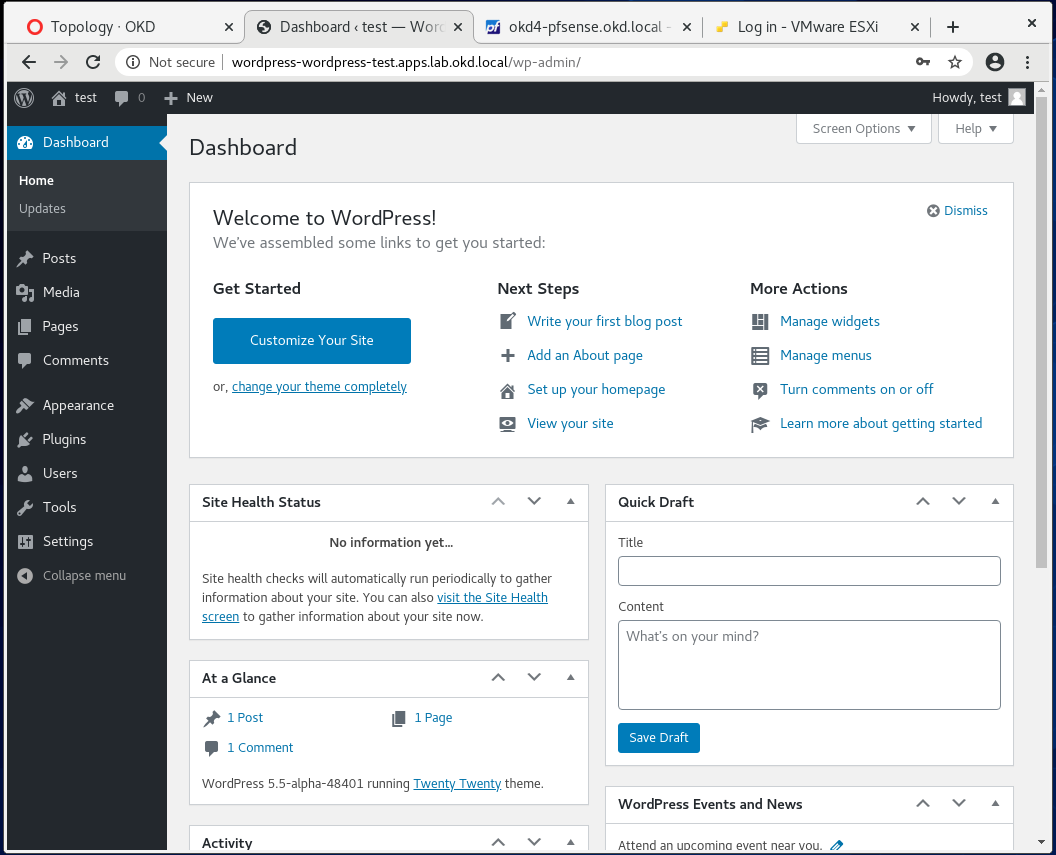Updated 7/29/2020
OKD is the upstream and community-supported version of the Red Hat OpenShift Container Platform (OCP). OpenShift expands vanilla Kubernetes into an application platform designed for enterprise use at scale. Starting with the release of OpenShift 4, the default operating system is Red Hat CoreOS, which provides an immutable infrastructure and automated updates. Fedora CoreOS, like OKD, is the upstream version of Red Hat CoreOS.
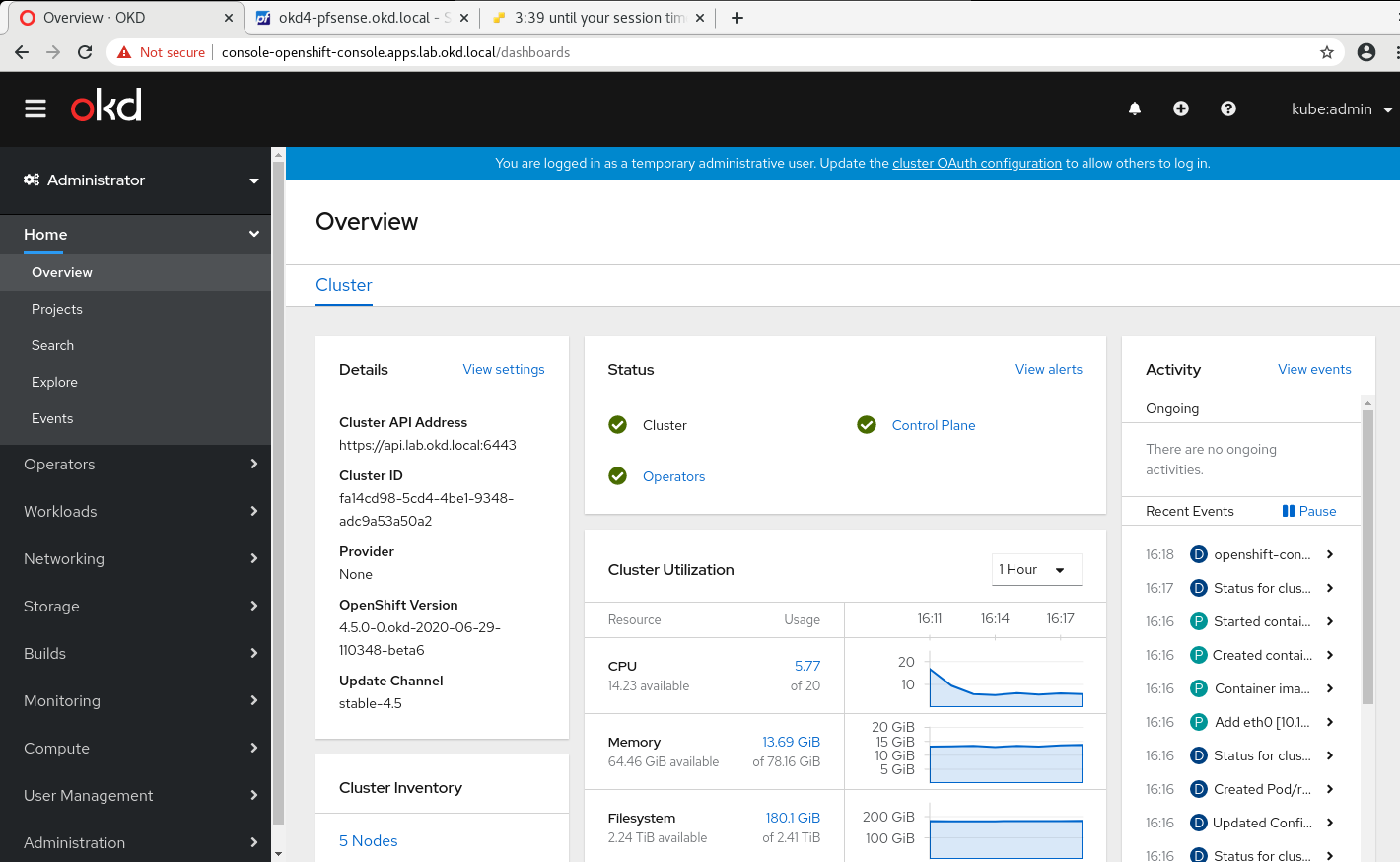
You can experience OpenShift in your home lab by using the open-source upstream combination of OKD and FCOS (Fedora CoreOS) to build your cluster. Used hardware for a home lab that can run an OKD cluster is relatively inexpensive these days ($250–$350), especially when compared to a cloud-hosted solution costing over $250 per month.
The purpose of this guide is to help you successfully build an OKD 4.5 cluster so that you can develop and learn to use OpenShift and OKD.
NOTE: In this guide, I use VMWare ESXi as the hypervisor, but you could use Hyper-V, libvirt, Proxmox, VirtualBox, or even bare metal instead.
VM Overview:
For my installation, I used an ESXi 6.5 host with 96GB of RAM and a separate VLAN configured for OKD. Here is a breakdown of the virtual machines:

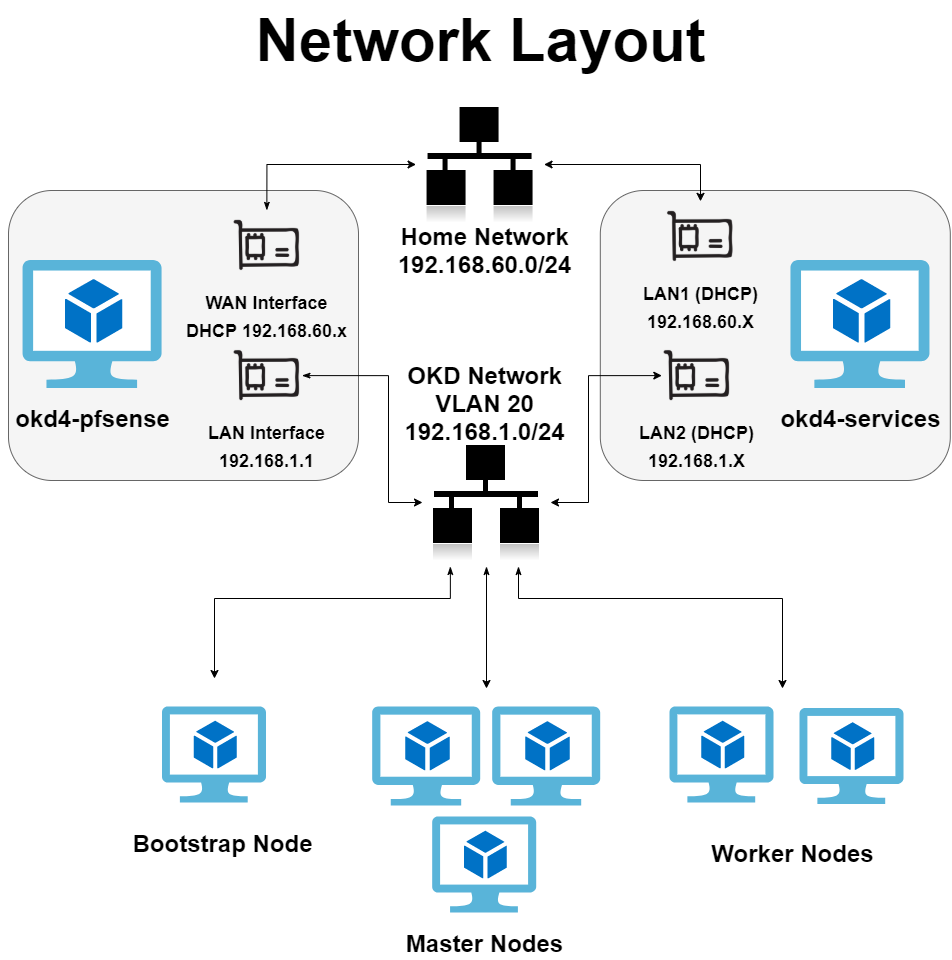
Create a new network in VMWare for OKD:
Login to your VMWare Host. Select Networking → Port Groups → Add port group. Setup an OKD network on an unused VLAN, in my instance, VLAN 20.
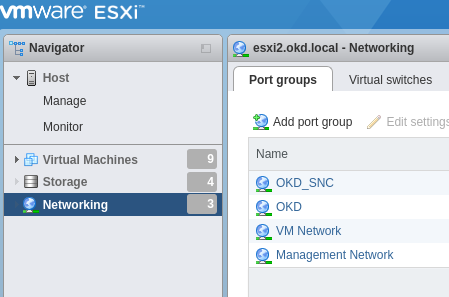
Name your Group and set your VLAN ID.
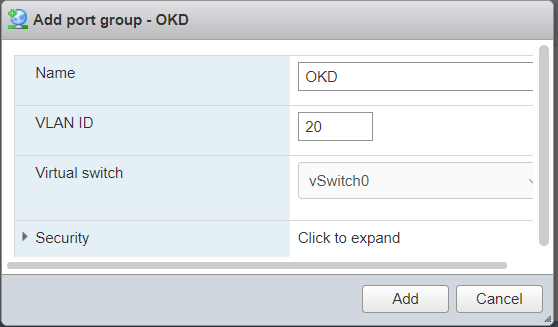
Create the okd4-services VM:
Download the CentOS 8 ISO DVD. Example: CentOS-8.2.2004-x86_64-dvd1.iso and upload it to your ESXi host datastore.
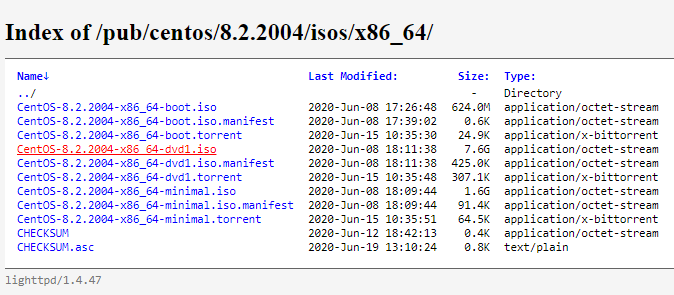
Create a new Virtual Machine. Choose Guest OS as _Linux _and Select CentOS 7 (64-bit).
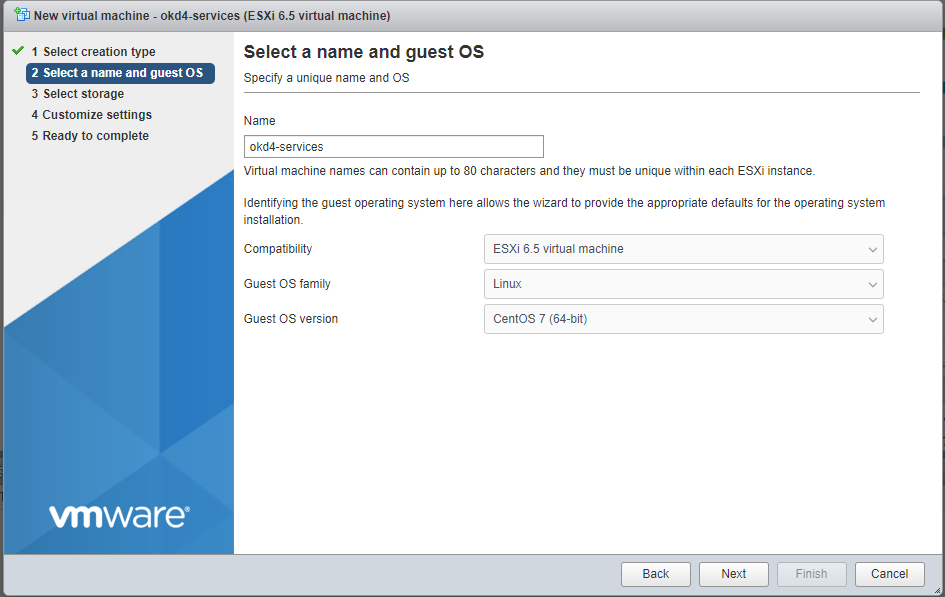
Select the Datastore and customize the settings to 4 vCPU, 4GB RAM, 100GB HD. Add a 2nd network adapter to the OKD network. Attached the CentOS ISO.
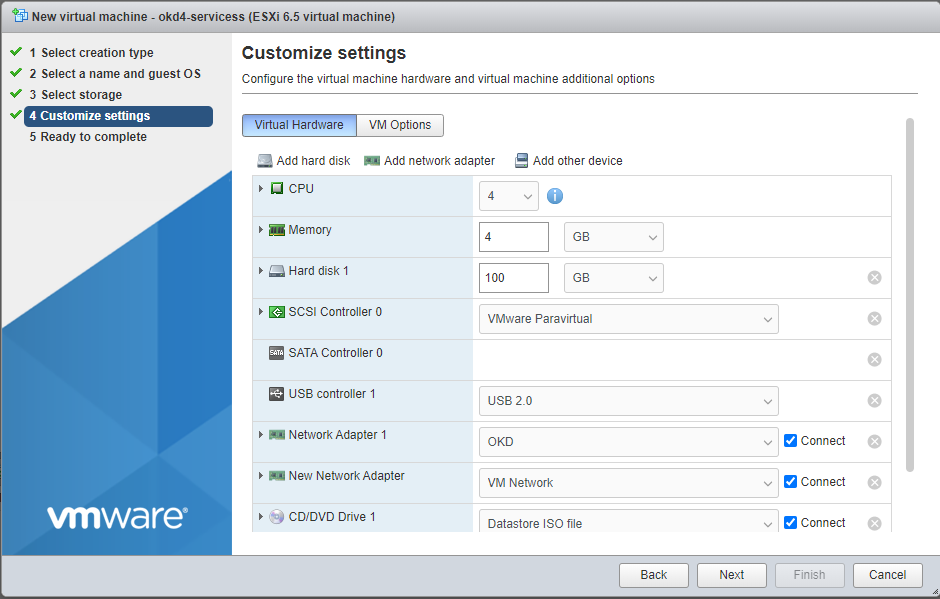
Review your settings and click Finish.
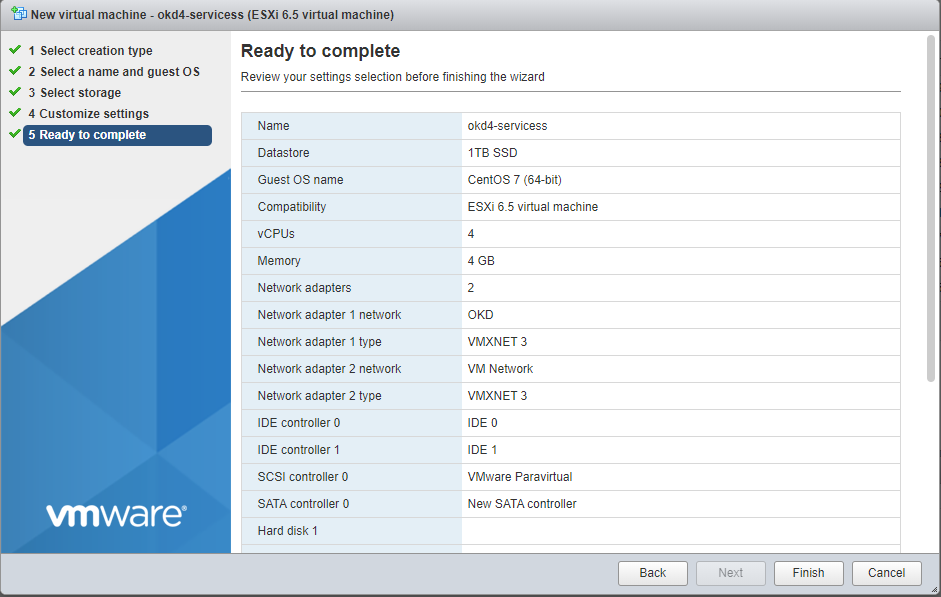
#okd #openshift #homelab #kubernetes #coreos
